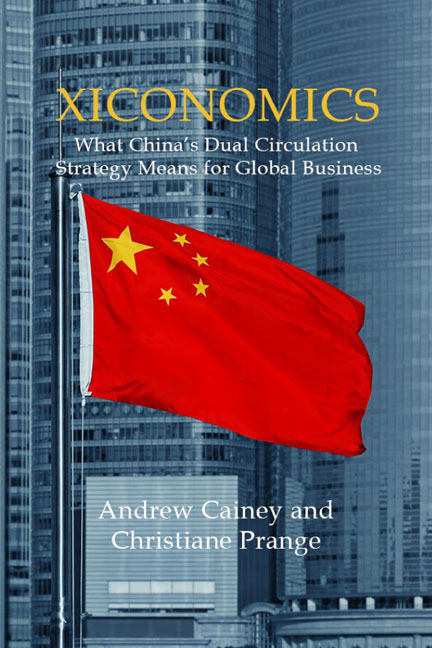9 - How Dual Circulation changes the game
Published online by Cambridge University Press: 23 January 2024
Summary
For Chinese electric vehicle buyers, “it isn't [about] handling, braking, acceleration ‒ it's how well connected is your vehicle, and here Volkswagen is behind,” says Michael Dunne of automotive consultancy ZoZoGo, an advisor on the Chinese market to large carmakers. Being run from Germany, he adds, may have put VW's China business at a disadvantage.
This 2022 Financial Times article laid bare the decline of VW's China success story. VW had led the way in localization, with a 1984 joint venture and the launch in 1999 of a long-wheelbase model targeting the needs of the Chinese market. Now, with China's automotive market both the largest and most innovative in the world, the Localizer needed to localize more. As Herbert Diess, CEO, announced in Beijing following the first fall in car sales for 20 years, “The future of the Volkswagen Group will be decided in the Chinese market.” A taste of things to come in China's Dual Circulation economy?
Dual Circulation changes what foreign companies need to do. It both describes the context for business strategies that involve China and reshapes these strategies. First, the clear dividing line marked out between internal and external circulation highlights the divergent and distinct business environments between China and other markets. The much-discussed need to localize and adapt to the China context is stronger than ever. Second, the ambitions of Dual Circulation to create a technologically more capable and self-reliant China with a much larger consuming middle class change the nature of the China opportunity. In the near term, these ambitions sharpen China's policy focus on how foreign companies can help China succeed, especially in key technologies. This presents business opportunities, yet often runs counter to the China policy of governments back at headquarters. Moreover, the very aim of Dual Circulation is often to strengthen the future competitors of multinationals. In the longer term, Chinese policy success would create a much larger market, albeit one with much more capable Chinese competitors. Such success is far from a foregone conclu-sion, however. State intervention in technology initiatives and repeated government failure to address China's sectoral imbalances could instead lead to wasted investment, stagnant growth and a withering of entrepreneurial dynamism.
- Type
- Chapter
- Information
- XiconomicsWhat China's Dual Circulation Strategy Means for Global Business, pp. 129 - 148Publisher: Agenda PublishingPrint publication year: 2023



